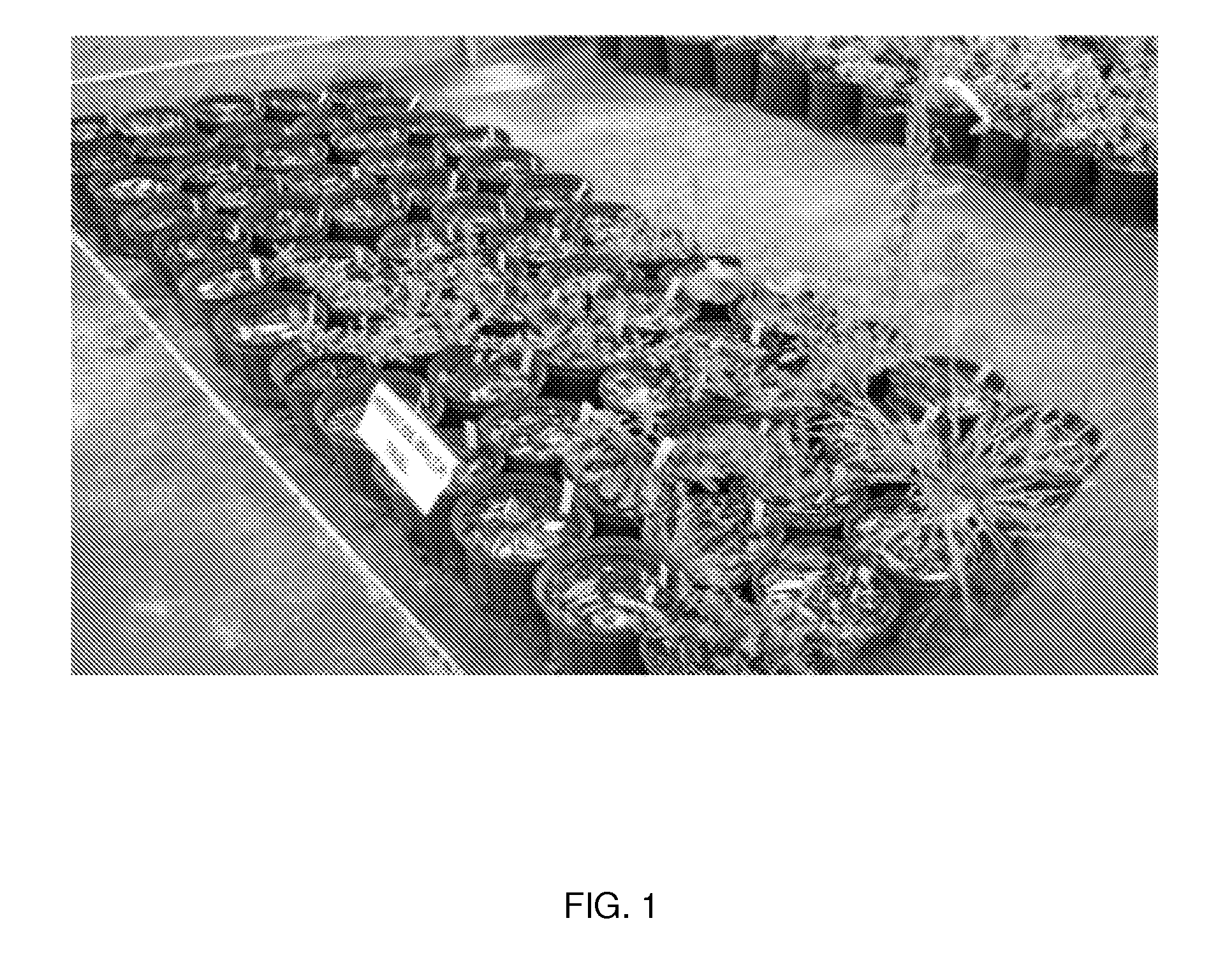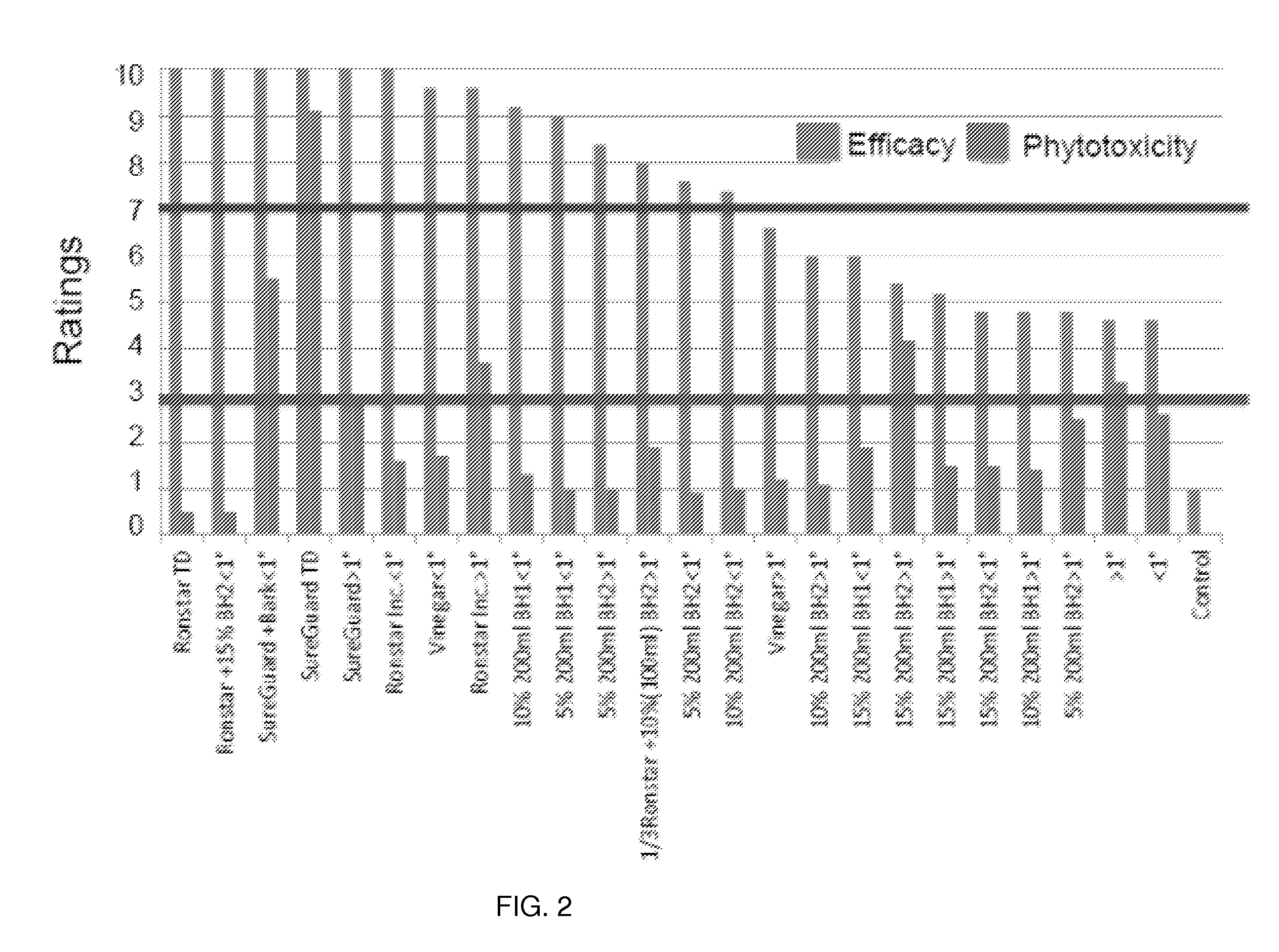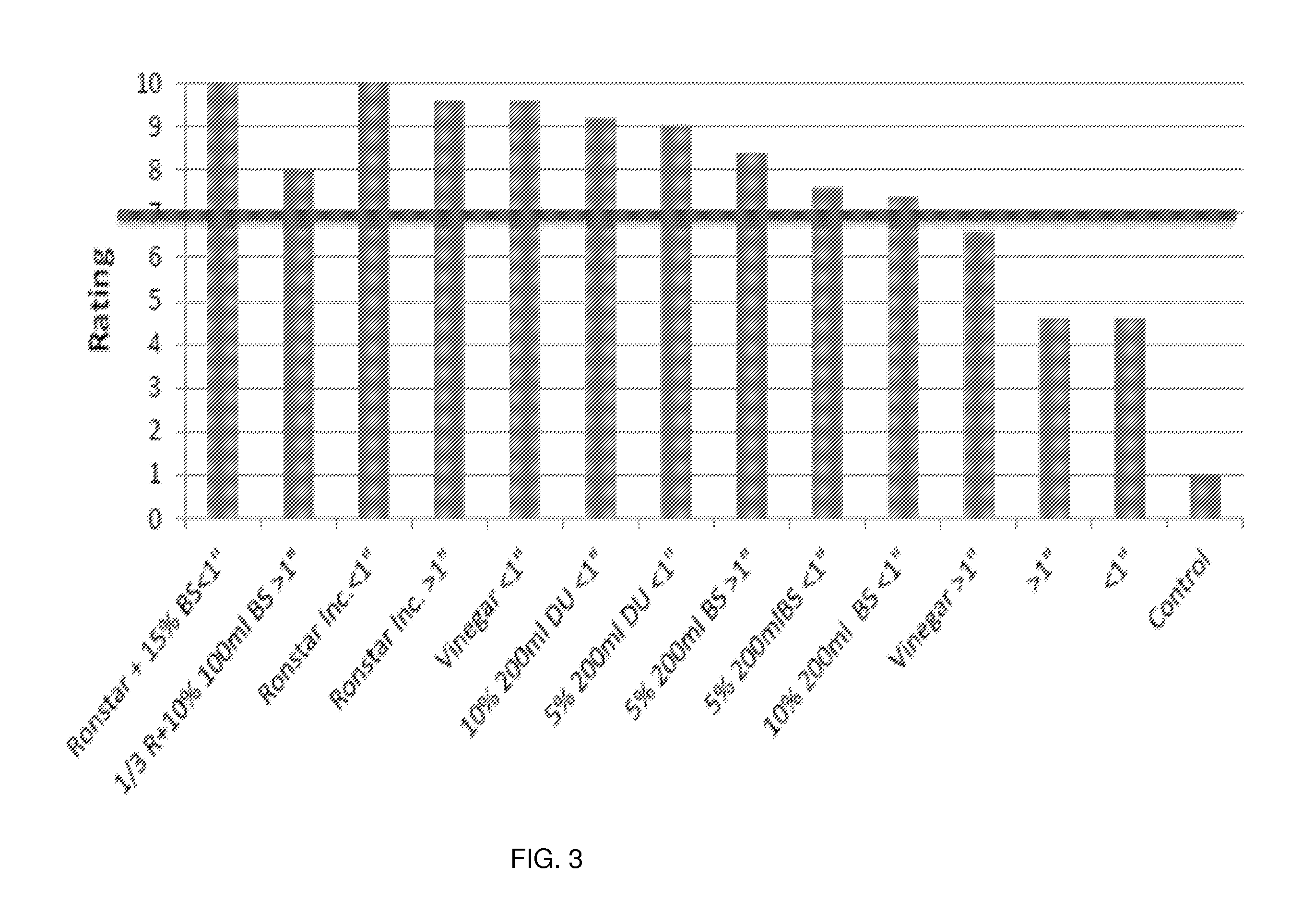Natural bioherbicides and related materials and methods
a bioherbicide and biotechnology, applied in the field of natural bioherbicides and related materials and methods, can solve the problems of herbicide registration loss, drastic economic impact of decline in the nursery and landscape industry, and slow or prevent the growth of weeds, so as to prevent the introduction of undesirable plants, reduce the reproductive capacity of weeds, and prevent the effect of introducing undesirable plants
- Summary
- Abstract
- Description
- Claims
- Application Information
AI Technical Summary
Benefits of technology
Problems solved by technology
Method used
Image
Examples
example 1
[0146]Extracts
[0147]Extracts of two allelopathic plants called bioherbicide (BH)1 (Austrian pine) (Pinus nigra) and BH2 (Blue Spruce) (Picea pungens) were prepared and applied at 5% and 10% aqueous solution. Branches were cut from trees on the Ohio State University (OSU) campus and branches and needles were ground using a laboratory mill After grinding, 10 g of ground plant samples were mixed with 50 mL of ethanol and shaken at 200 rpm for at least 24 hours using an electronic plate shaker. After shaking, the extracts were filtered using Whatmann #1 filter paper. Each process was repeated three times for each species, so a total of 3-50 mL extracts for each species was used to create 5%, 10% and 15% extracts (10 g / 50 ml=20% w / v extracts):
[0148]5% of 100 ml=3 ml actual. 0.05 / 0.2×100=25 mL
[0149]10% of 100 mL=0.10 / 0.2 =50 mL
[0150]15% of 100 mL =0.15 / 0.2 =75 mL
example 2
[0151]Overview of the various studies to determine effects of herbicides on weed growth.
[0152]Materials and Methods
[0153]Evaluations were initiated and conducted at Halton Hills, Ontario, in one gallon containers, 75° F. in full sun, and at Vineland Station, ON, in 2 inch mulched 3×3 ft. plots at 80° F. in full sun (Study 1). Two sizes of Pine bark of greater than 1 inch and less than 1 inch were obtained from Gro-Bark Ltd., Caledon, ON. In another study three bark types were used: pine less than 1 inch, Hardwood (bark and wood), and Cedar (bark and wood) obtained from Gro-Bark Ltd (Study 2). In both studies bark was spread on plastic sheets at two inches thick, with five replications per treatment, and sprayed. In Study 1, the treated bark was allowed to stand for 24 hours and applied to the tops of freshly planted one-gallon containers. In Study 2, treatments were applied in situ over the of 3×3 ft. plots. In Study 1 oxadiazon (Ronstar®, Dow AgroSciences) and flumioxazin (BroadSta...
example 3
[0156]Effects of herbicides on efficacy, phytotoxicity, and duration of weed control under various conditions.
[0157]Materials and Methods
[0158]Study 1 had two objectives: 1) determine the efficacy and duration of weed control of different control methods, including two barks sizes applied as a single layer on the container surfaces; and 2) assess the phytotoxicity of the different methods in containers.
[0159]The study was conducted at Elev. 269 m, NE 43° 41.341′, WO79° 56.153′; 12688 10th Line, Halton Hills, ON, in one gallon containers on a sand pad overlaid with geotextile as part of the trial work (FIG. 1). The study was initiated in May and air temperatures were 75° F. Five single plant replications were conducted per treatment and species. The container species were Euonymus fortunei (‘Emerald Gaiety’ or Winter Creeper Euonymus), Sambuscus canadensis (American Elderberry) and Pinus Mugo (Mugo Pine). ARRPAC #1 (Tri-Tech Molded Products, Inc. McMinnville, Tenn. 37110) was used. A...
PUM
 Login to View More
Login to View More Abstract
Description
Claims
Application Information
 Login to View More
Login to View More - R&D
- Intellectual Property
- Life Sciences
- Materials
- Tech Scout
- Unparalleled Data Quality
- Higher Quality Content
- 60% Fewer Hallucinations
Browse by: Latest US Patents, China's latest patents, Technical Efficacy Thesaurus, Application Domain, Technology Topic, Popular Technical Reports.
© 2025 PatSnap. All rights reserved.Legal|Privacy policy|Modern Slavery Act Transparency Statement|Sitemap|About US| Contact US: help@patsnap.com



